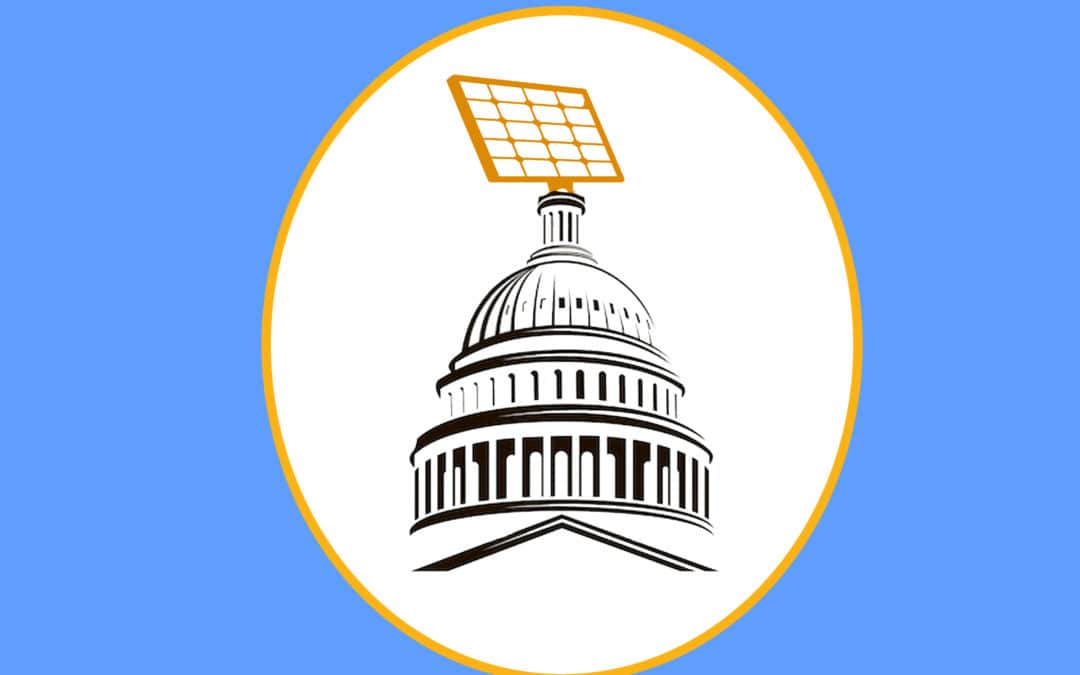OK, let’s admit it, we’ve become a bit unaccustomed to good news emanating from Washington, DC. But, this week we have a reason to be excited: the Inflation Reduction Act is set to dramatically incentivize investment in new solar PV systems.
The Inflation Reduction Act’s Impact on Solar
Congress passed the Inflation Reduction Act on August 12th and signed into law on August 16th. This bill would have two major implications for the solar market. The first is a restoration of the Federal Investment Tax Credit or ITC. This policy currently provides a tax credit equal to 26% of the total project cost for a solar PV system. This rate is scheduled to decline to 22% in 2023 and 10% in 2024. The Inflation Reduction Act would restore this rate to its previous level of 30% for the next 10 years, stepping back down to 26% in 2033.
What’s more, Congress will convert the Solar ITC from a tax credit to a direct payment to non-profits and government entities. This is a very big deal for non-profits like the many of the churches and other non-profit organizations Honeydew has served in the DMV region as it makes direct ownership of systems much more attainable. It remains unclear if condos, co-ops, and HOAs can take advantage of this direct payment system.
Additional bonuses are available for low income housing sites. If at least 50% of the households’ incomes are less than 200% of the poverty line or less than 80% of the area’s median income, the Federal ITC could be as high as 50% the cost of the solar project.
And finally, the Inflation Reduction Act will bring back the PTC or Production Act, which had previously been phased out in 2006. Whereas the ITC is based on the total cost of the project, the PTC is a subsidy based on the production of the solar energy system. The PTC will provide an additional 2.6¢/kWh for projects that start before the end of 2024 and last 10 years! This can make a big difference in states that lack strong SREC programs.
Other Benefits from The Inflation Reduction Act
Batteries
Stand-alone battery storage devices will now be eligible for a 30% tax credit. Previously, solar owners would have to pair their system with storage to take a credit on both. Now tax credits are available for stand-alone battery system purchases.
Electric Vehicles
The new bill provides up to $7,500 tax credits for the purchase of a new Electric Vehicles (EV) and up to $4,000 tax credits, or 30% of the price of the vehicle, whichever is less, for the purchase of previously owned EVs. The exact amount of the credit will be based on a calculation that considers factors like the vehicle’s sourcing and assembly – in order to qualify for the tax credit, EVs need to be assembled in North America in order to incentivize domestic manufacturing. This EV tax credit also applies to any “clean vehicle.” So for example, a hydrogen fuel cell car or a plug-in hybrid vehicle with 4 – 7 kWh of battery capacity could qualify.
EV Credit Income Limits: If you’re a single filer with a modified adjusted gross income (MAGI) over $150,000, married couple who file jointly with a MAGI over $300,000, or file as head of household with a MAGI over $225,000, you won’t qualify for the EV tax credit.
EV Credit Pricing Limit: Vans, pickup trucks, and SUVs with a manufacturer’s retail price (MSRP) of more than $80,000, won’t qualify for the credit. Electric sedans will need an MSRP below $55,000 to qualify for the EV tax credit.
Energy Efficiency Upgrades
Here are some examples of maximum potential energy efficiency tax credits or rebates:
- Up to $8,000 for a heat pump system
- Up to $1,750 for a heat pump-enabled water heaters
- Tp to $840 for converting to an electric stove/cooktop/oven and electric pump dryer for laundry
- Up to $4,000 for upgrading breaker boxes
- Up to $2,500 for installing (or upgrading) electric wiring
- Up to $1,600 for insulation, air sealing, and ventilation upgrades
- Up to $150 for home energy audits
- $250 for an exterior door ($500 total for all exterior doors)
- $600 for exterior windows and skylights; central air conditioners; electric panels and certain related equipment; natural gas, propane, or oil water heaters; natural gas, propane, or oil furnaces or hot water boilers
More to Come
This is a massive bill and there are still solar provisions in it that we likely missed. We’ll be reviewing it in more detail over the coming weeks so stay tuned for further details.

